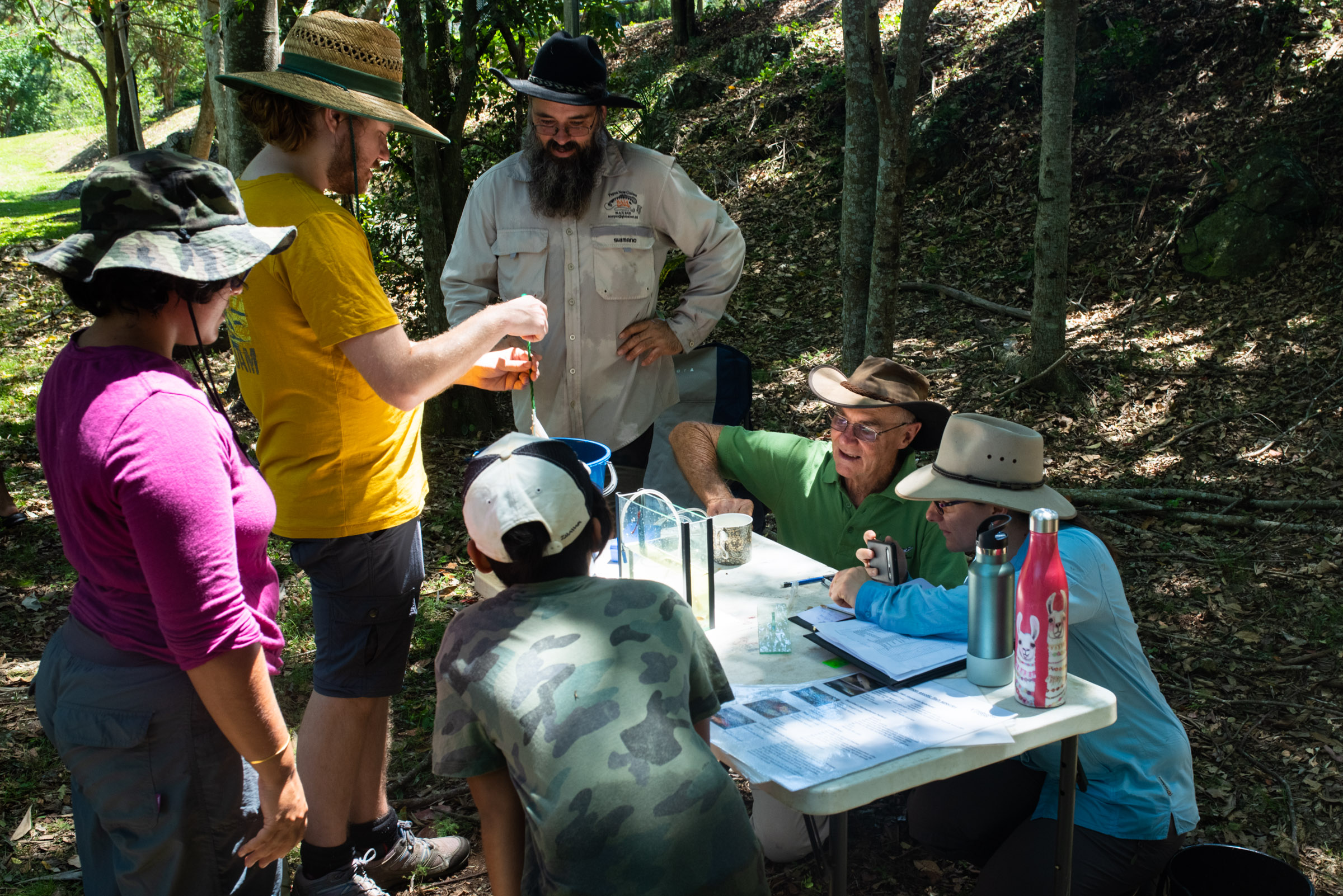Wonderful Waterways
There’s more than meets the eye in our creeks. In the Moggill Creek Catchment, there are at least 20 species of native fish and countless more macroinvertebrate species, a.k.a. water bugs. A specialist group called the Creek Health Monitoring Project (CHMP), part of the Moggill Creek Catchment Group, have been monitoring local waterways since 2011. Results from water quality testing, macro-invertebrate and fish surveys indicate a remarkably resilient ecosystem. This can be highlighted by consistent findings of sensitive water bugs like caddis fly nymph which sensationally hollow out sticks to create an impressively camouflaged home. Sensitive water bugs like the caddis fly would not be able to exist in polluted waterways so their presence is an indicator of good waterway health.
During a CHMP event, trained team leaders oversee native fish surveys, where it is common to gaze the magnificent colour of Crimson Spotted Rainbow or Pacific Blue Eye up close. Surveys from the previous two years have recorded 602 fish with 317 of these being native species and 285 being exotic species.
Despite the relative health of our local creeks, there are many risks and things we can avoid to help native fish and water bugs thrive. Car washing should be done in such a way that the water, which could contain harmful chemicals from the washing liquid and oil, doesn’t run off to the drain and into the creek. Another thing to resist is releasing any fish into waterways. Any fish released, native or not, could be carrying harmful diseases that will disrupt and threaten the balance of the creek.
The CHMP team will hold surveys again in November 2022. Follow MCCG on Facebook or email [email protected] subject ‘add to mail list’ to stay up to date or get involved in waterway health monitoring.
Lewis Peach
Published in



